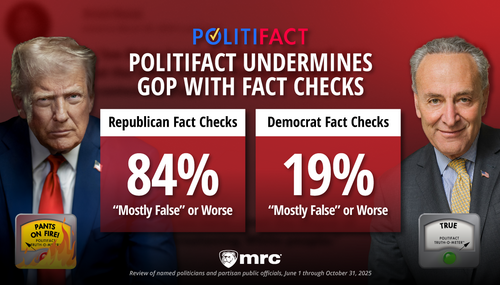
On Saturday, Aversa wrote an opinion piece that fully explained why she sees gloom and doom in every government statistic regardless of whether or not it's warranted.
Here's how Aversa began her analysis entitled "Good Economic News Something of a Mirage" (h/t NB reader R Anthony, emphasis added throughout):
The unemployment rate drops. Productivity grows. The trade deficit shrinks. Sounds great, right? Not so fast.
Borrowing radio broadcaster Paul Harvey's signature saying: let's hear the rest of the story.
Let's hear the rest of the story?
Jeannine, for the most part, all you ever tell your readers is "the rest of the story." As such, borrowing from the Passover Hagaddah, why should this day be different from all other days?
Some seemingly good economic numbers can be something of a mirage masking weaknesses in the national economy.
Let's take the unemployment rate, which dipped to 5 percent in April, from 5.1 percent in March. .A closer look reveals that the decline in unemployment is not as good as it looks at first blush. The drop came as the number of people holding part-time jobs for economic reasons swelled to 5.2 million in April, up sharply from 4.4 million a year earlier.
The dip in the unemployment rate also occurred as employers cut jobs for the fourth month in a row, pushing up total losses beyond the quarter-million mark — to 260,000. Wages barely grew and workers' hours were trimmed. Taken altogether, these things point to a tepid picture of employment conditions nationwide.
There's a lot here that needs to be addressed. First of all, nobody took last Friday's unemployment announcement as a sign that the economy was doing well. Instead, it was an indication that things might not be as bad as some had thought.
With that as pretext, this "part-time jobs for economic reasons" statistic in my view is a bit of a red herring. After all, don't most people work for economic reasons?
To me, the more important statistic concerning part-time employees that relates to economic strength is the number of such workers that want a full-time job, but have to settle for less. The thinking here is that in a tough labor market, people will have to take part-time jobs because there aren't enough full-time ones to go around.
With that in mind, this number actually decreased last month, and is only 85,000 greater than last year at this time. This hardly suggests a bad labor market.
Another related statistic Aversa conveniently ignored is the number of multiple-job holders which typically increases as the economy worsens. This number stands 216,000 below where it was a year ago.
Speaking of comparing year over year numbers, while Aversa felt it was important to do such with this part-time employees stat, she chose not to with the non-farm payrolls data she referenced by only sharing what's happened the past four months. For some reason, she chose not to inform readers that despite the recent declines, there are still 462,000 more people employed than last year at this time.
Furthermore, as it pertains to the Household Survey, from which the unemployment rate is actually determined, the number of people considered employed rose to an all-time high of 154 million in April, and stands 1.4 million above where it was last year at this time.
As such, Aversa was cherry-picking data from the May 2 Labor Department report in order to present her case that the good economic news is a mirage.
That said, are we out of the woods? Are the good times about to roll?
It's probably way too soon to say that. However, as the recent data has indeed been better than what the gloomy Guses in the media have been predicting, it would be nice if Joyless Jeannine would turn her frown upside down.
Don't hold your breath.




